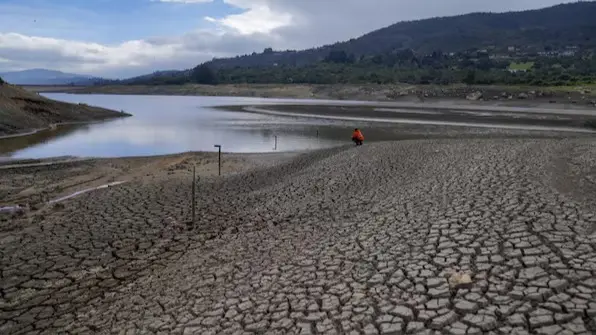Updated 12 April 2024 at 17:38 IST
Here’s Why Colombia’s Capital City Bogota is Rationing Water
Colombia’s Capital City Bogota, which houses millions of people, has been forced to implement water rationing amid severe water crisis.
- World News
- 2 min read

Bogota Water Crisis: Colombia’s Capital City Bogota, which houses millions of people including foreign nationals from various countries, has been forced to ration the water amid severe water shortage in the city. This has come up after water levels at the main water reservoirs in the city dropped down to critical level, leading the city administration to take some strict steps to curb the wastage of water. With this water rationing policy, about 90 Lakh residents are expected to be affected.
An acute water shortage in the city has prompted the concerned authorities to implement water rationing measures. Meanwhile, the Mayor of Bogota City, Carlos Fernando Galan stated, “An acute drought made worse by the El Nino climate phenomenon, which typically causes high global temperatures and delays precipitation, has left reservoirs at critical levels.”
Mayor Galan urged residents, saying, “Let’s not waste a drop of water in Bogota at this time. This will help us to ensure that these restrictions can be lifted more quickly or reduced.”
How is water being rationed
As per reports, the Bogota administration, on April 11, implemented water rationing measures under which officials have divided the city and dozens of surrounding towns into 9 different zones. The water supply body will switch off the water supply services for 24 hours in each zone on a rotational basis. The rotation will be reset every 10 days. However, hospitals and schools have been exempted from this rotational policy in the city.
Advertisement
The authorities will evaluate the situation every two weeks on the rationing policy. Meanwhile, the residents in the city have started reducing their water usage.
Water reservoirs dried up in Bogota
Reports suggest that Colombia’s reservoirs have dried up owing to a lack of rain and extreme temperatures. The water rationing measures are part of emergency plans brought by the Colombian government and Bogota’s mayor after several reservoirs plunged to historically low levels. It is being said that the Chuza and San Rafael reservoirs, part of the Chingaza System that provides 70 per cent of Bogota’s water, are at unprecedented lows.
Advertisement
As per the city’s mayor, the Chuza reservoir is at less than 17 per cent capacity, its lowest level since at least the early 1980s. “This must be the beginning of a behavioural change that is sustainable over time and guarantees that water is enough for everyone,” the mayor asserted.
Published By : Abhishek Tiwari
Published On: 12 April 2024 at 17:38 IST
